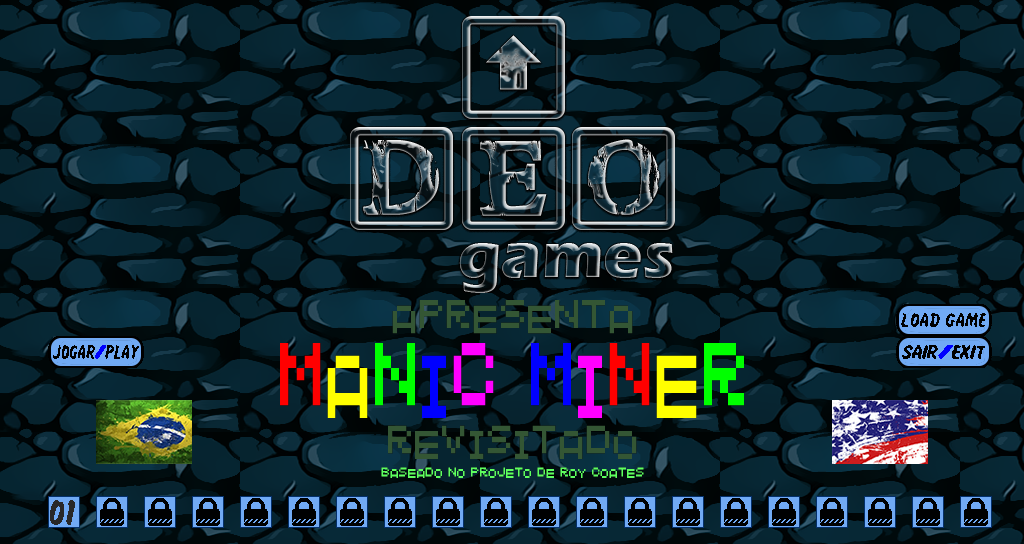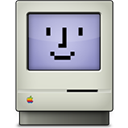| | Control: | Game is controlled by the same keys that are used to playing under MS DOS. For fullscreen press 'Right Alt' + 'Enter'. |
| Help: | This game is emulated by javascript emulator em-dosbox. If you prefer to use a java applet emulator, follow this link. |
|
Download Manic Miner for Mac to arcade game. Manic Miner really doesn't need an introduction. This is a native version of Andy Noble's PC remake. Operating Systems Macintosh, Mac OS X 10.3. Jablen sky A, H ugler H, vo n Cranach M, Kalinov K. Kraepeli n revisited: 5. A reassessment and statistical analysis of dementia praeco x and manic- depressive insanity in 1908. Take a step back in time and revisit your favorite DOS and Windows games. The files available in this collection consist primarily of PC demos, freeware, and shareware.
| Other platforms: | Unfortunately, this game is currently available only in this version. Be patient :-) |
|
| Game info: |
box cover | Game title: | Manic Miner | | Platform: | MS-DOS | | Author (released): | Software Projects (1983) | | Genre: | Action, Platform | Mode: | Single-player | | Design: | Matthew Smith, Steve Wetherill, Derrick P. Rowson, Andy Noble | | Music: | Matthew Simmonds | | Game manual: | not available | | Download: | manic.zip | Game size: | 200 kB | | Recommended emulator: | DOSBox | | From Wikipedia, the free encyclopedia: | Manic Miner is a platform game originally written for the ZX Spectrum by Matthew Smith and released by Bug-Byte in 1983 (later re-released by Software Projects). It is the first game in the Miner Willy series and among the early titles in the platform game genre. The game itself was inspired by the Atari 800 game Miner 2049er. It has since been ported to numerous home computers and video game consoles.
At the time, its stand-out features included in-game music and sound effects, excellent playability, and colourful graphics, which were well designed for the graphical limitations of the ZX Spectrum. The Spectrum's video display allowed the background and foreground colours to be exchanged automatically without software attention and the 'animated' load screen appears to swap the words Manic and Miner through manipulation of this feature.
On the Spectrum this was the first game with in-game music, the playing of which required constant CPU attention and was thought impossible. It was achieved by constantly alternating CPU time between the music and the game. This results in the music's stuttery rhythm. The in-game music is In the Hall of the Mountain King from Edvard Grieg's music to Henrik Ibsen's play Peer Gynt. The music that plays during the title screen is an arrangement of The Blue Danube.
In each of the twenty caverns are several flashing objects, which the player must collect before Willy's oxygen supply runs out. Once the player has collected the objects in one cavern, they must then go to the now-flashing portal, which will take them to the next cavern. The player must avoid enemies, listed in the cassette inlay as '...Poisonous Pansies, Spiders, Slime, and worst of all, Manic Mining Robots...', which move along predefined paths at constant speeds. Willy can also be killed by falling too far, so players must time the precision of jumps and other movements to prevent such falls or collisions with the enemies.
The game ends when the player has no lives left; extra lives are gained every 10,000 points,or when the player completes all twenty caverns and escapes to the open air. More details about this game can be found on Wikipedia.org. | | For fans and collectors: | | Find this game on video server YouTube.com or Vimeo.com. | | Buy original version of this game on Amazon.com or eBay.com. | Find digital download of this game on GOGorSteam. | | Platform: | This version of Manic Miner was designed for personal computers with operating system MS-DOS (Microsoft Disk Operating System), which was operating system developed by Microsoft in 1981. It was the most widely-used operating system in the first half of the 1990s. MS-DOS was supplied with most of the IBM computers that purchased a license from Microsoft. After 1995, it was pushed out by a graphically more advanced system - Windows and its development was ceased in 2000. At the time of its greatest fame, several thousand games designed specifically for computers with this system were created. Today, its development is no longer continue and for emulation the free DOSBox emulator is most often used. More information about MS-DOS operating system can be found here. | | Available online emulators: | 5 different online emulators are available for Manic Miner. These emulators differ not only in the technology they use to emulate old games, but also in support of various game controllers, multiplayer mode, mobile phone touchscreen, emulation speed, absence or presence of embedded ads and in many other parameters. For maximum gaming enjoyment, it's important to choose the right emulator, because on each PC and in different Internet browsers, the individual emulators behave differently. The basic features of each emulator available for this game Manic Miner are summarized in the following table:
| | Emulator | Technology | Multiplayer | Fullscreen | Touchscreen | Speed | | Archive.org | JavaScript | YES | NO | NO | fast | | js-dos | JavaScript | YES | YES | NO | fast | | js-dos 6.22 | JavaScript | YES | YES | NO | fast | | jsDosBox | JavaScript | YES | NO | NO | slow | | jDosBox | Java applet | YES | YES | NO | fast |
|
|
| Similar games: |
| The Goonies | Spelunker | Mountain King | H.E.R.O. | Magical Tree |
|



